I’ve Found the 18 Best High-Margin Products That Could Make You Big Bucks
If you click to purchase a product or service based on our independent recommendations and impartial reviews, we may receive a commission. Learn more
A high-margin product is a golden goose for an online business: a product that is low cost to secure and store but high profit when it comes to selling. These products must be hard to find then, right? Surprisingly, if you know how to source products to sell and how to calculate profit margins, it’s achievable for both seasoned sellers and newbies.
Below, I’ve compiled a list of the most profitable products to sell online so that you can understand and utilize the endless possibilities for your store. Once you’ve identified the best high-margin products for your niche, you’re well on your way to reaping the rewards!
What Are the Attributes of High-Margin Products?
A high-margin product is an item that, when sold, will result in a high profit margin – around 30%. Once all business overheads and expenses have been taken into account, a high-margin product should still provide you with a high profit rate without being too expensive and off-putting to customers. But what attributes should you be looking out for when selecting a high-margin product to sell online?
- High quality
- High demand
- Limited competition
- Potential for repeat custom
- Easy to ship
- Durable and sustainable
- Sellable all year round
- A high enough price point to make a profit (but not too high that it’s hard to sell)
- Easily marketable
Now you’ve got a clearer idea about what high-margin products are, it’s time to check out our list of the best high-margin products to sell online, to help you boost conversions, sales, and profits.
1. Jewelry
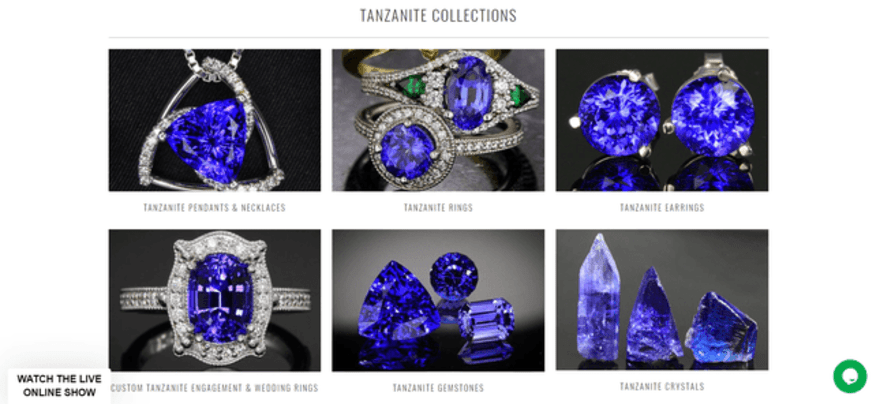
Jewelry has always been one of the most profitable products to sell online: the average profit margin when selling jewelry online is between 42% and 50%. Depending on the quality of your materials, your supplier, and the reputation of your brand, you could look to markup your prices by up to 100%. Customers don’t mind paying extra for an established brand that promises quality, which makes jewelry one of the best high profit margin products.
How To Sell Jewelry Online
Start your online jewelry journey by sourcing reputable suppliers, either locally or internationally. Balance pricing with costs, market rates, and value perception. Then advertise on platforms like Instagram and Etsy, using compelling product descriptions. Engage influencers, too, for more reach.
Pros of Selling Jewelry
- Jewelry is timeless, and the target market spans all ages and income types.
- It’s also a great product for merchants because it’s often easy to store and ship, helping you to keep your overheads low and boost your profit margins even further.
Cons of Selling Jewelry
- The jewelry market is very saturated, so it might be worthwhile to sell niche products, like artisan or healing crystals, so the competition isn’t so fierce.
- You should expect jewelry packaging to be more expensive than for other items, since it is expected to be both protective and beautiful.
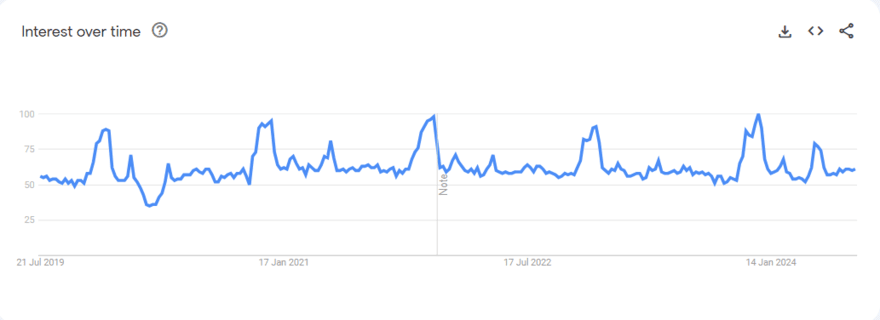
2. Beauty Products
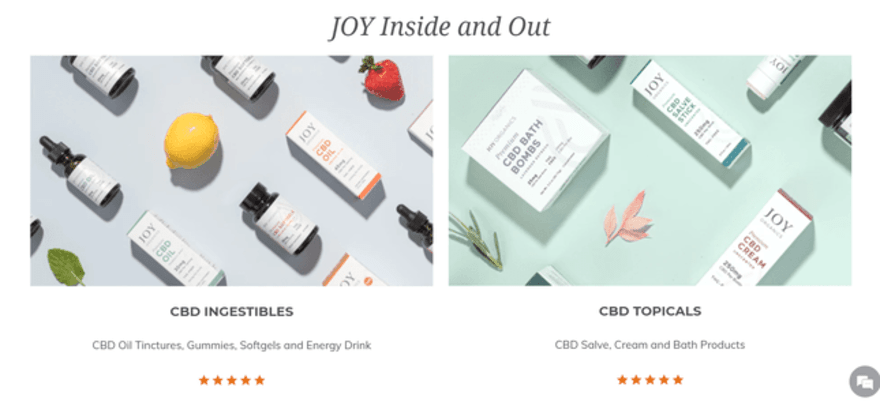
Beauty products such as makeup, skincare, fragrance, nail supplies, and wellness products are some of the highest margin products available. According to some studies, profit margins can be as high as 58%.
How To Sell Beauty Products Online
Look into private label cosmetic suppliers or visit beauty trade shows to source products. For pricing your products, review competitors and other beauty website examples to gauge the average rates that others are selling similar products for, and then market them across social media platforms and your website for increased visibility. Our guide to how to sell makeup online will come in handy if you’ve already narrowed down your niche.
Pros of Selling Beauty Products
- With so many suppliers and manufacturers, you’ll be sure to find a great wholesale price and the items themselves are often easy to display and market to customers.
- The target market is increasingly growing more diverse and people of all ages and genders spend money on cosmetics.
Cons of Selling Beauty Products
- The competition is fierce and includes a lot of large businesses and celebrity names.
- Beauty products can easily break and/or spill, so more expensive high-quality packaging will be required.
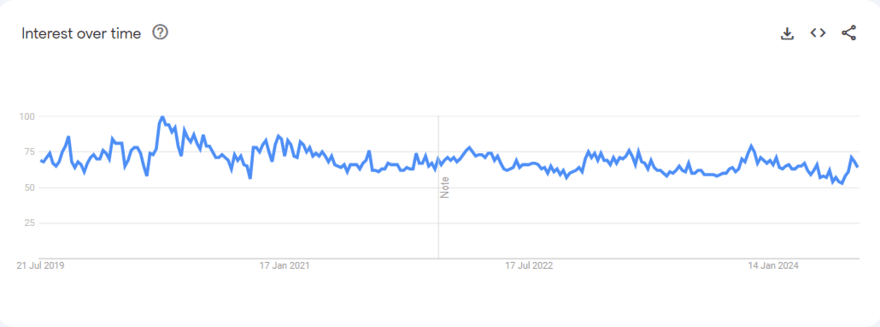
3. Sunglasses

The sun is always shining somewhere, even if it may not feel like it in the depths of winter. Sunglasses, therefore, are a great high-margin product option. Whether it’s someone living in a sunny climate or a customer about to go on vacation, there is always demand for stylish sunglasses, and profit margins usually sit between 50% and 70%.
How To Sell Sunglasses Online
Dive into the ever-trendy sunglasses market by sourcing from local wholesalers for unique designs. Alternatively, try global suppliers like Alibaba for competitive pricing.
Price your shades by considering cost, competitor pricing, and perceived value. Market them by showcasing their style and UV protection features on social media, especially Instagram. Collaborate with influencers to drive sales or run seasonal campaigns to keep the demand high.
Pros of Selling Sunglasses
- There is always demand for sunglasses due to their practicality.
- There are plenty of reputable suppliers that will sell to you at a good rate.
- Sunglasses are lightweight and compact, making them easy to store and ship.
Cons of Selling Sunglasses
- Unfortunately, with high demand comes lots of competition, so knowing what these competitors are selling – and bettering this – is key to making yourself stand out! Also, there are plenty of subcategories and niches like sporting and prescription sunglasses that will be less saturated.
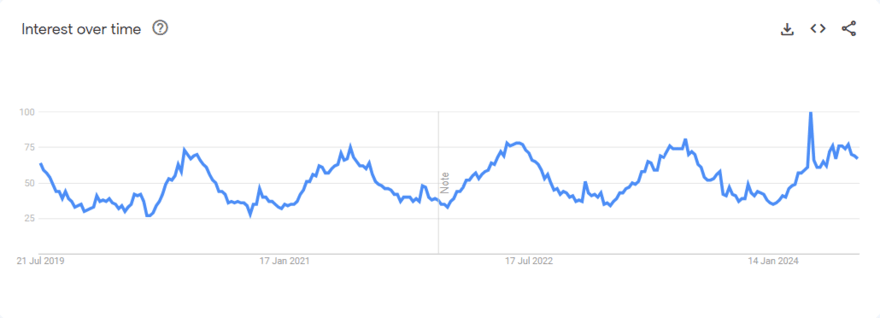
4. Watches

Watches make a great high-margin product, mainly because there are so many options available. In fact, studies show the average profit margin to sit around 45%.
Watches are no longer just about telling the time, and customers want attractive timepieces that are an accessory in their own right.
How To Sell Watches Online
Source from suppliers aligning within your market niche. Again, local manufacturers or wholesalers are usually the way to go.
Price according to your market; premium for high-end, competitive for the budget-friendly. Market them through platforms that resonate with your audience’s lifestyle, using high-quality images and showcasing their features.
Highlight luxury and precision for high-end, or practicality and style for an affordable range. With a keen understanding of your target market and a strategic approach, your watch venture can tick around profitably.
Pros of Selling Watches
- Watches are a perennial product with a target market spanning all ages and genders
- Analog watches, designer watches, waterproof watches, or outdoor watches; there are multiple categories and sub-niches for you to explore.
Cons of Selling Watches
- It’s a competitive market. Therefore, you should consider the type of watch and customer you’d like to appeal to – high-end or cost-effective; stylish or practical?
- Watches are fragile so you will need to spend more money and time on packing your goods.
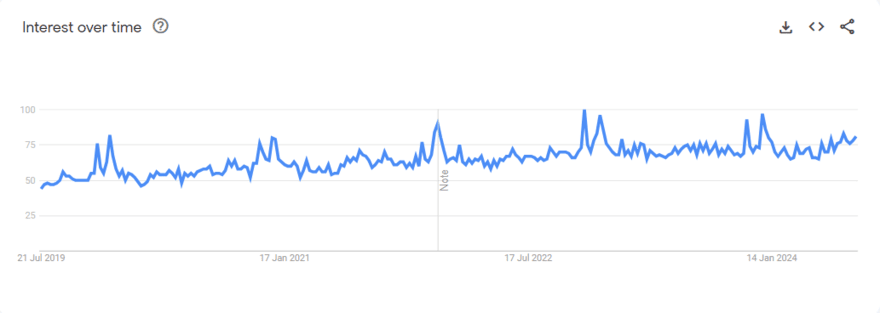
5. Women's Apparel

There’s always a high demand for women’s apparel – in fact, it’s one of the most popular online sales niches. The market size was $62.8bn in 2023 and is only expected to inflate further. Profit margins range between stores, but you could be looking at anything between 45% and 60% once you’ve established a brand.
How To Sell Women’s Apparel Online
Design an exclusive line or align with reputable vendors to kickstart your venture. When pricing retail products, your prices should mirror your market stance, be it luxe or economical.
On social media, platforms like Instagram are your stage to spotlight the allure or finesse of your apparel. Consider a “Fashion Friday” or something similar to spotlight different attire ensembles. Team up with style influencers to extend your reach and add a dash of authority.
Not being dependent on developers was the #1 reason I chose Shopify, and it saved me money. I find Shopify easy to use, both front end and back end. It accommodated selling footwear in multiple sizes and widths without extra coding.
Shopify 2.0 was not released when I launched, and I have not updated to it yet. I wished I had known it was about to be released. I think the feature of removing and re-arranging sections throughout the site is a good one. I am using Shogun to build landing pages. It would be nice to have a feature like that built into all themes.
Pros of Selling Women’s Apparel
- You can appeal to many women through staying on top of trends.
Cons of Selling Women’s Apparel
- You will need to spend time utilizing social media to create a strong online presence.
- There’s already a ton of competition out there so you need to find a niche, such as designer coats or plus-size fashion, in order to get your ecommerce store in front of the right eyes.
- You will need a large upfront investment to ensure you have enough stock to appeal to customers.

6. Fitness Equipment
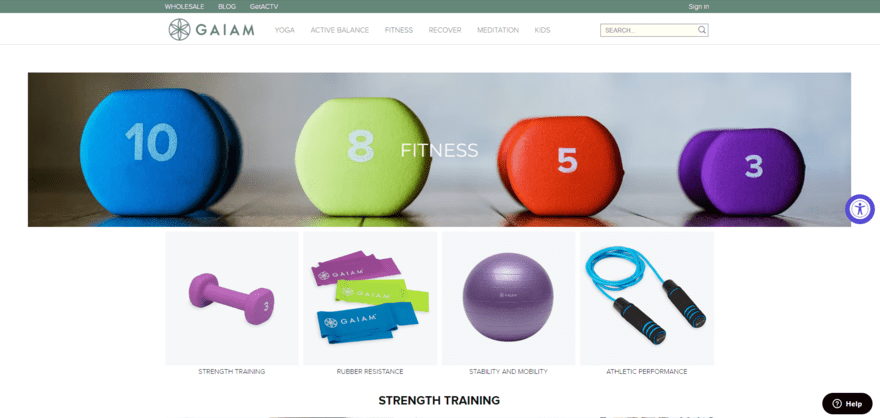
More and more people are looking to stay fit and active from the comfort of their own homes, and this market means you can considerably markup your products and still appeal to customers – yoga matts are a great example of low cost products with high profit margins, which are typically around 40%.
Take a look at the competition and see what sells out quickly from their sites when choosing which products to stock. You could even go one step further and offer fitness training sessions alongside the equipment for sale.
How To Sell Fitness Equipment Online
From local wholesalers to online marketplaces and from manufacturers directly, source wisely and vet suppliers beforehand to ensure quality.
Pricing-wise, you’ll want to cover costs at the very minimum. Keep an eye on the market to see what the competition is doing and mark up smartly.
Social media and your website are the grand stage for marketing. Think about using fitness influencers to do a YouTube video showcasing your equipment, since this can get more eyes on your products.
Pros of Selling Fitness Equipment
- Health and fitness is a booming industry at the moment with a wide customer base.
- Fitness equipment is often out of stock online because of its popularity, which provides you with a gap in the market to fill.
Cons of Selling Fitness Equipment
- While there are many suppliers already online, the popularity of the items makes sourcing available stock tricky.
- It can be difficult and expensive to ship larger fitness items, especially for products such as weights or exercise bikes. Make sure you take the cost and time shipping will take into account when pricing your items so that your profit margins won’t take a hit.
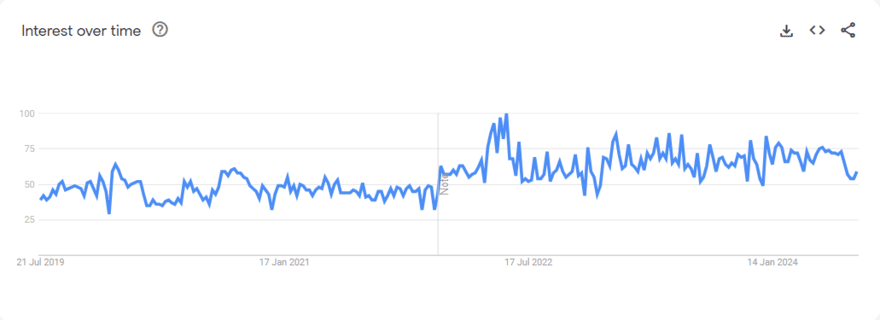
7. Candles

Candles are always a popular item, so whether people are buying one for themselves or as a gift, you’ll never run out of opportunities to market your products to your target audience. They’re also low cost to make and can provide profit margins of 25% and 50%, which makes them a great high-margin product to sell.
How To Sell Candles Online
When sourcing candles, seek suppliers known for quality, eco-friendly materials. Local artisans or overseas suppliers with a transparent supply chain can be good partners.
Pricing is a balance between cost recovery, market competition, and perceived value: consider the uniqueness of your candles and the story they tell.
Captivating marketing tactics include engaging narratives about how the candle was made, and include stunning visuals – giving people the essence of the candle. Social media, especially visual platforms like Instagram and Pinterest, can fan the flame of your brand’s visibility.
Pros of Selling Candles
- Candles have a relatively low cost to make, especially if you do it yourself!
- They also don’t last forever, so if you make sure yours are good quality, customers will keep coming back for more. They also don’t mind paying more for strong scent pay-off.
Cons of Selling Candles
- Candles are fragile, so packaging needs to be protective and of good quality.
They can’t be stored at temperatures too high or they will melt, so keep this in mind when considering where to store yours.
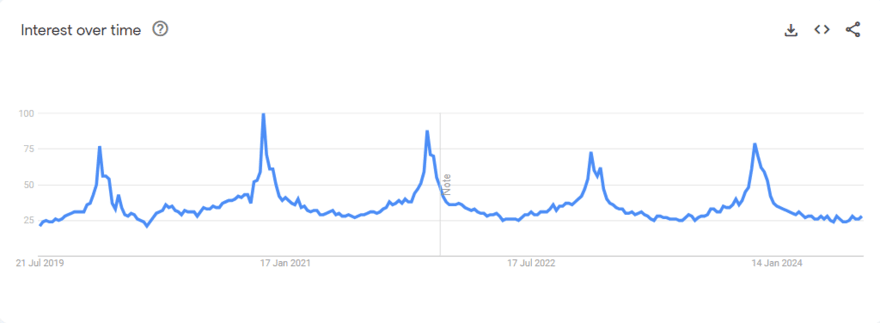
8. Yoga Leggings

If you can combine a high-quality pair of yoga leggings with unique designs then you’ll have a great high-margin product on your hands. You can earn a profit of up to 30% if you manage to cater to specific interests and niches, for example, HIIT yoga leggings or yoga leggings for running.
How To Sell Yoga Leggings Online
Source smart with local manufacturers for uniqueness or places like Alibaba for better deals. Or you can visit textile trade shows to broaden your supplier networks.
Be sure to price so that you can cover costs. For marketing, create some magic across social media platforms like Instagram, TikTok, and YouTube, encouraging user-generated content with which customers can flaunt their leggings during HIIT and running workouts.
Pros of Selling Yoga Leggings
- Yoga leggings are very lightweight which makes shipping affordable.
- There’s a strong target market for yoga leggings, with men and women aged between 15-35 a key demographic.
Cons of Selling Yoga Leggings
- You will need considerable storage space to accommodate a wide range of designs.
- The initial cost of the product is high, so you will have to provide a considerable deposit before you see profits.
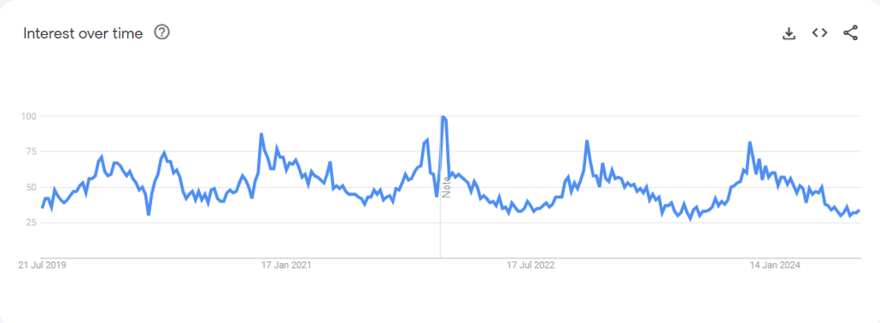
9. Kids' Toys

There’s always going to be a demand for kids’ toys. With birthdays and special achievements spread right through the year, parents have a reason to add yet another piece of bright plastic to their homes.
Of course, you should expect a seasonal boost in December when Christmas shopping begins, but if you manage to source the very best toy options, you’ll be able to ramp up your profit margins all year round. When done right, you can expect profit margins of up to 50%.
How To Sell Kids’ Toys Online
When sourcing toys, consider both local and overseas suppliers, and always request samples for quality assessment. For pricing, use a blend of cost-plus, competitive, and value-based strategies to ensure profitability while remaining competitive.
For marketing, utilize online advertising, social media, and email marketing to reach and engage with your audience. SEO and community involvement can also further enhance your brand’s visibility and credibility in the online toy market. For even more tips, check out our full guide on how to start an online toy store!
Pros of Selling Kids’ Toys
- Kids’ toys are timeless. They may change over the years, but they will always be present.
Cons of Selling Kids’ Toys
- There’s already a lot of competition out there. The best thing to do is to ensure your products meet the highest quality standards, giving parents a reason to pick you above the competition.
- Toys will vary in fragility and weight. If you’re selling a wide range, you will have to prepare for lots of change in packaging and shipping prices.
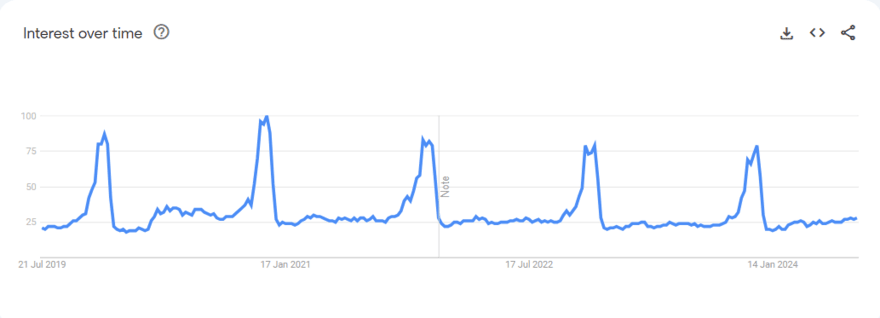
10. Pet Supplies

Pet care supplies are a great high-margin product, with the profit margin estimated to be between 30% and 60%.
The great thing about selling pet supplies online is that there are no seasonal trends you need to be aware of. People are taking care of their pets all year round and that won’t be changing any time soon.
How To Sell Pet Supplies Online
Navigating the pet care world requires a blend of passion and savvy. When sourcing products, ensure a combination of quality and affordability, perhaps seeking partnerships with local artisans for a unique inventory.
Pricing is an art and requires the careful balancing of your costs with current market rates and the perceived value of your offerings.
Engage in storytelling marketing, crafting a narrative around the wellbeing of furry companions to resonate with your audience. Utilize social media to share pet care tips, spotlighting your products in action, while fostering a community of pet aficionados. Your journey in pet care ecommerce is not merely about transactions, but growing a pet-loving tribe.
Pros of Selling Pet Supplies
- Pet owners worldwide are willing to spend a fortune on everything from crates and leashes to bowls and toys to keep their furry friends happy, so don’t be afraid to price how you see fit.
- When selling a range of pet products, you have a great opportunity to create bundles and multibuy options.
Cons of Selling Pet Supplies
- Spend time considering your stock. Large bags of food and crates can quickly make your shipping prices skyrocket.
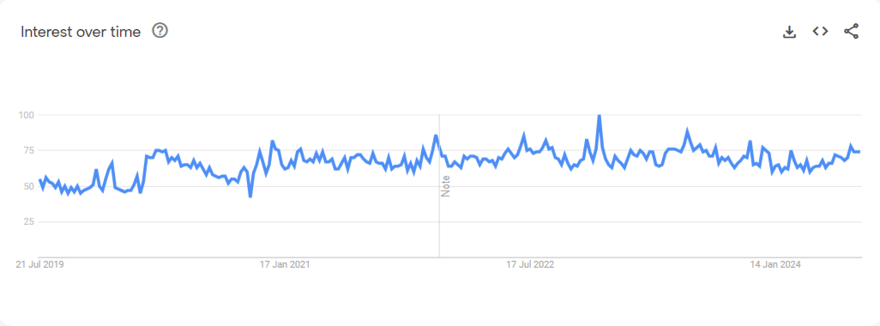
11. Phone Accessories
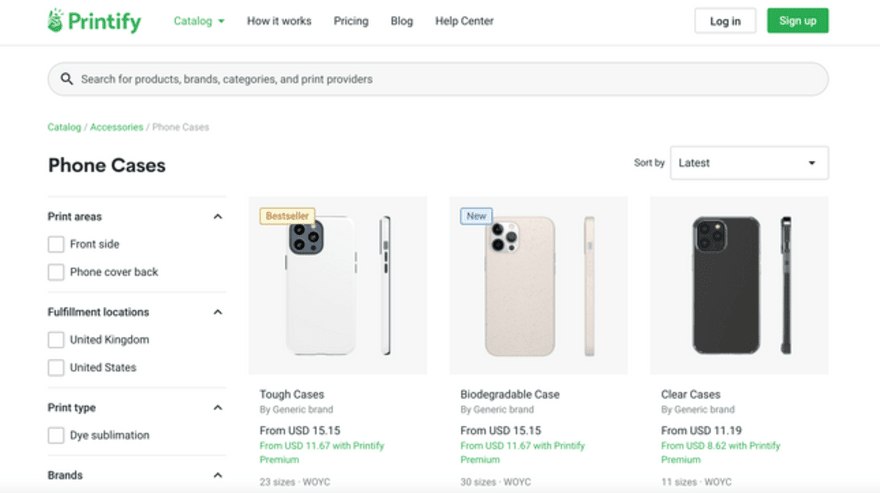
Our relationships with our smartphones won’t be ending anytime soon and with manufacturers releasing new models every month, there are plenty of opportunities to sell phone accessories.
You can expect profit margins of anywhere between 50% and 200%, depending on the item, your branding, and your marketing strategy.
How To Sell Phone Accessories Online
Look to buy phone accessories from wholesalers, as the low price point enables you to bulk buy. You can also source manufactures that specialize in phone accessories.
Your market positioning plays a large part in your potential profit, so figure out your selling point and focus your marketing towards it. For example, tech is getting increasingly expensive and people are looking for high-quality products. Many brands capitalize on features that make their cases “indestructible,” even throwing them from heights to prove their durability in ads!
Pros of Selling Phone Accessories
- With customers regularly updating their devices, there’s always a steady stream of demand.
- There are endless categories to explore! I’m talking earphones, cases, charms, cleaning equipment, and trackers.
- Thanks to the generally small size of smartphone accessories, storage and shipping are easy and low-cost.
Cons of Selling
- Pricing can be tricky, but the reality is that these products are often on the cheaper end of the market. Searching platforms like Amazon and eBay will give you an indication of what the going rates are.
- There’s lots of room for error when selling tech accessories. Make sure you understand the sizes and models that you’re selling cases for.
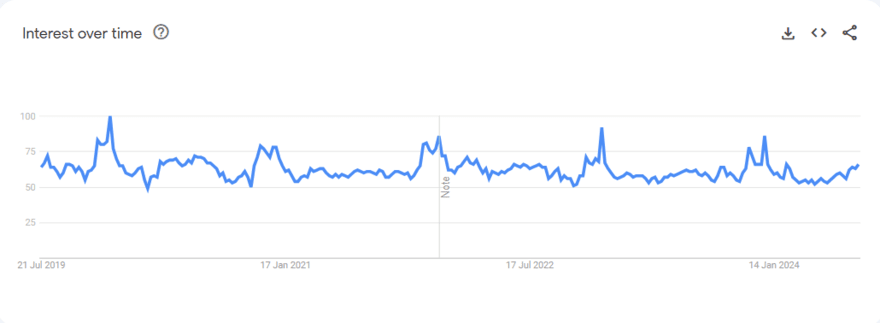
12. Supplements
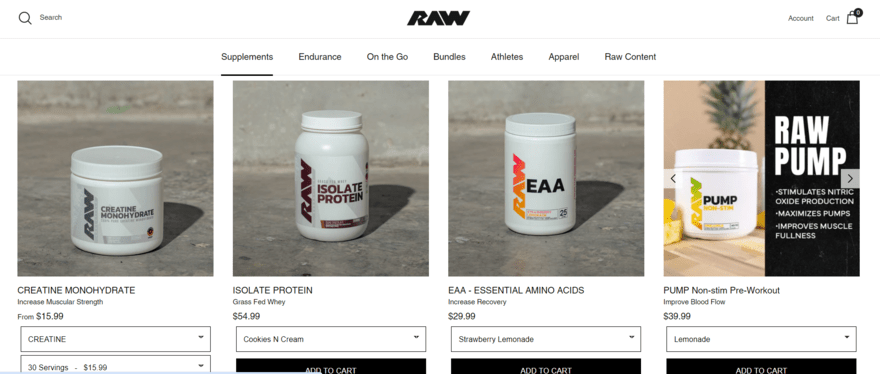
In a world where people are constantly striving to better themselves, it’s no surprise that health supplements like multivitamins and protein powder are on our list of high profit margin products.
The target market for these products is so wide simply because it’s such a diverse sector. Supplements are recommended by doctors to people with deficiencies, but also by fitness trainers and dieticians to people who are trying to change their physique, boost their immune system, improve the appearance of their skin or hair, and more.
Studies show that the profit margin for these products is between 30 and 50%.
How To Sell Supplements Online
Successful supplements are built solely on trust. Consumers don’t want to ingest things without feeling confident in their positive effects. The main things to focus on here, then, are building a strong brand identity, stocking high quality products, and cultivating a log of positive customer reviews.
Build your brand identity around science, facts, and ingredients. These days people value clear cut results over fancy designs and cheap prices, so look to verify the efficacy of the supplements first and foremost
Building up customer reviews is easier said than done, but this is where social media influencers are your best friend. Source influencers in the field – fitness is a great example here – and reach out to them to trial your products and post about their progress and results. This will most definitely cost you some money, but will be worth the long-term profits if you have the budget to pay influencer rates. Consider using websites like Billo for an easier route to get quality influencer ads for your products within one to two weeks.
Pros of Selling Supplements Online
- Lots of supplements are small and lightweight, so shipping and storage should be stress-free.
- You won’t need to think about packaging design much. In these cases, it’s most effective when it’s simple and clear.
- The target market is wide and there will always be demand for at least one product.
- Supplements can be brought in bulk.
- When people have a positive experience with supplements, they will often stay loyal to the same brand.
Cons of Selling Supplements Online
- It’s a rapidly changing industry, so you’ll need to stay up to date with trends and competitors to know where the demand lies.
- Competitors in popular areas include big brand names and celebrity endorsements, so try to find a unique selling point like innovative or sustainable packaging to help you stand out.
- It will take time to build a trusted brand and gain reviews, which will be the main drivers behind your sales.
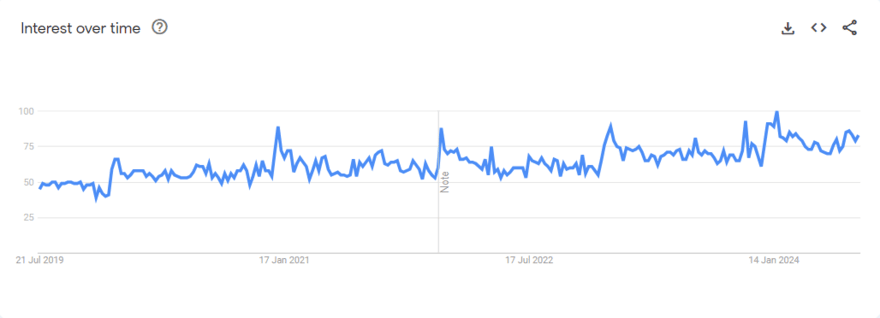
13. Home Office Supplies
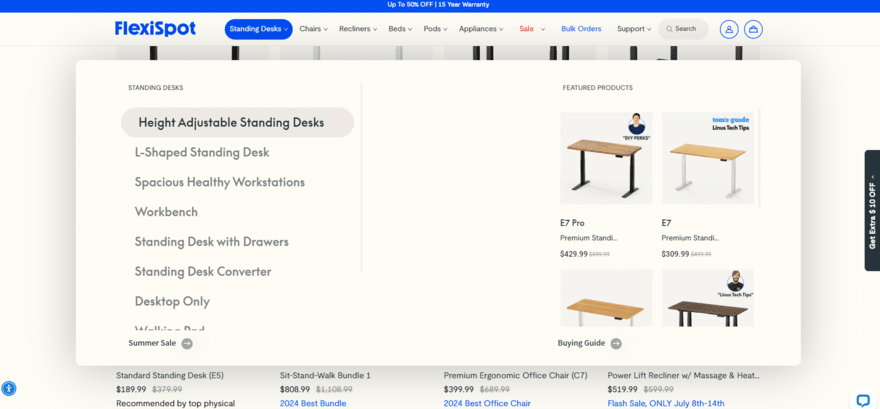
Flexible working is only becoming more commonplace, meaning more and more people are choosing to work from the comfort of their own homes.
Demand for office supplies, covering everything from ergonomic chairs to printer paper, is through the roof, and you can earn up to 40% in terms of profit margin.
How To Sell Home Office Products Online
Again, wholesalers are a great choice for purchasing home office products, as are trade shows. Prices will vary depending on the quality of products. If, for example, you’re opting for high-end leather office chairs, you should price higher than standard seats.
LinkedIn is a good place to advertise your products, and it’s worth exploring websites that specialize in office supplies and furniture to ensure you’re staying competitive with your products and pricing.
Pros of Selling Office Equipment
- Many companies offer their staff subsidiaries on any supplies they buy, meaning you can raise your prices without risking losing custom.
- There is a very high demand for all things office equipment at the moment, and just about anyone working for a company with a remote or hybrid policy will be a key customer.
- Businesses will often buy large orders for their offices in bulk.
Cons of Selling Office Equipment
- Demand has been booming in recent years, but there’s no way to know how long this will last.
- Certain office equipment is prone to damage and leaking, for example printer ink.
- Shipping and packaging will get complicated if you decide to stock both office furniture and supplies, so consider sticking to one speciality.
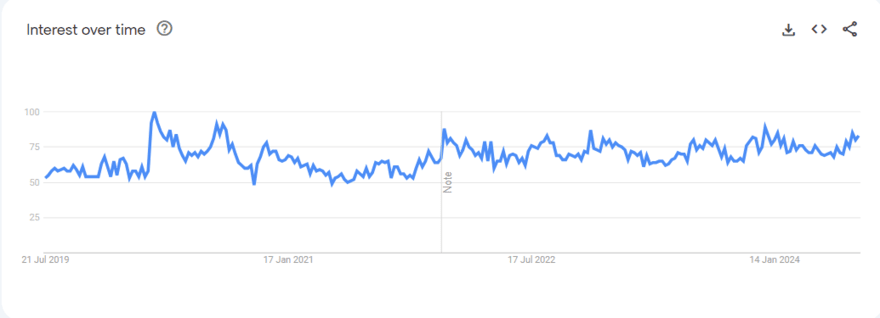
14. Sustainable Products
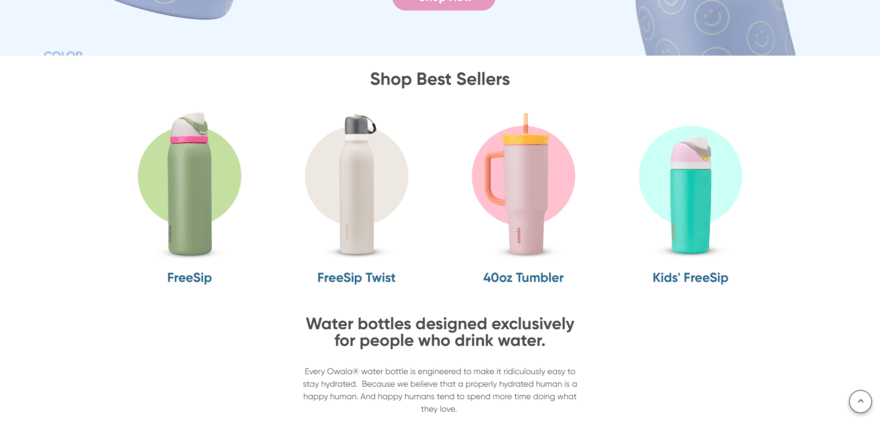
Sustainable products have surged in popularity over the years, with more and more people getting on the eco-friendly bandwagon. Profit margins can vary depending on the products, but they’re often favorable due to the perceived value of eco-friendly items.
How To Sell Sustainable Products Online
Source from ethical suppliers and manufacturers to keep in line with the products you sell. Look at suppliers that sell with certifications like Fair Trade.
Pricing should balance production costs with market rates, keeping in mind that some consumers are willing to pay a premium for sustainability.
There’s plenty of competition for sustainable products, so marketing takes on even more importance. Other than having your own website, consider selling on platforms like Amazon and eBay. Ensure as much of your business is as sustainable as possible, from making your website eco-friendly to using sustainable packaging.
Do some research into green marketing examples and see if there’s anything you could emulate. Use storytelling to connect with consumers emotionally and emphasize the positive impact of choosing sustainable options. Collaborate with environmental influencers to expand your reach and credibility.
Pros of Selling Sustainable Products
- The target market for sustainable products is diverse and includes everyone from the environmentally-conscious to families and businesses.
- Customers are willing to pay more for sustainable products that are going to last them a long time and help towards saving the environment.
Cons of Selling Sustainable Products
- Sustainability is a focus for most businesses now, so that factor alone won’t be enough to ensure your success.
- Sustainable products and materials are often expensive.
- Expect an increase in packaging costs if you’re transitioning your store into the eco friendly sphere, because your packaging will be expected to be sustainable too!
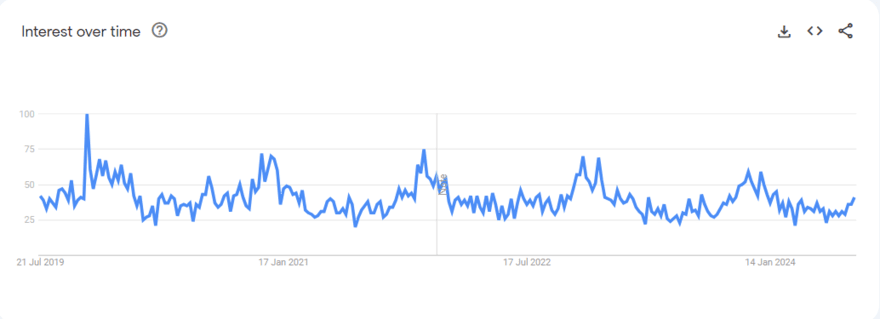
14. Tote Bags
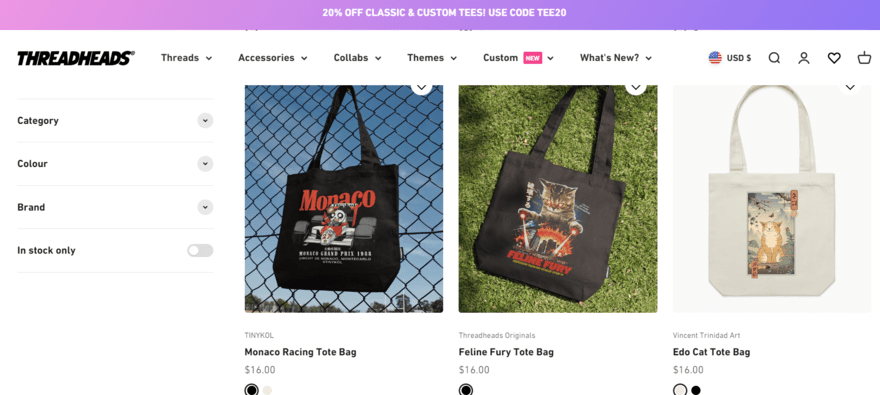
The prolific tote bag has become a universal staple for college students and shoppers around the globe. This product is beloved by everyone and, with a profit margin of about 40%, is a considerably high-margin product.
How To Sell Tote Bags Online
My guidance for successfully selling tote bags is the same as my advice for the sustainable products above. Make sure you follow the ethics of the product you’re selling from start to finish, that includes finding sustainable suppliers and products.
Totes are commonly stocked in gift and book stores, so reach out to businesses and offer to customize with their logo to reach a wider customer base.
Pros of Selling Tote Bags
- They are compact and lightweight, so are extremely easy to store and cost efficient to ship.
- Customers are willing to pay more for a good quality product that has a strong message of sustainability behind it, so don’t be afraid to (reasonably) mark up your prices.
Cons of Selling Tote Bags
- As with all reusable products, there is a lot of competition. Luckily, tote bags are relatively easy to diversify, especially if you’re artsy! Keep up with trends and research competitors when seeking new designs.
- Their long life cycle typically makes finding new customers difficult. Selling unique products and collections will help to nurture a loyal customer base and encourage word of mouth marketing.
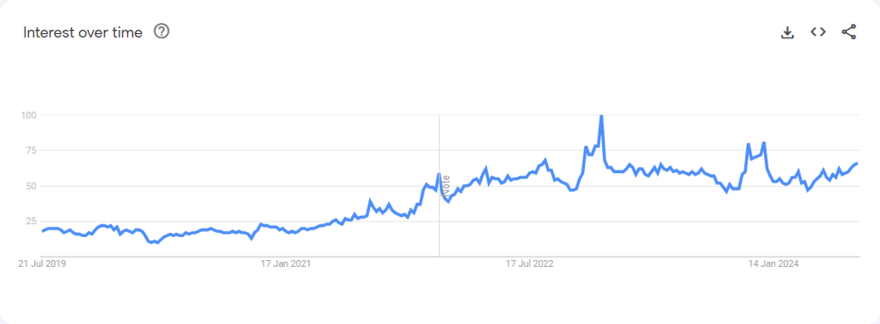
16. Digital Courses
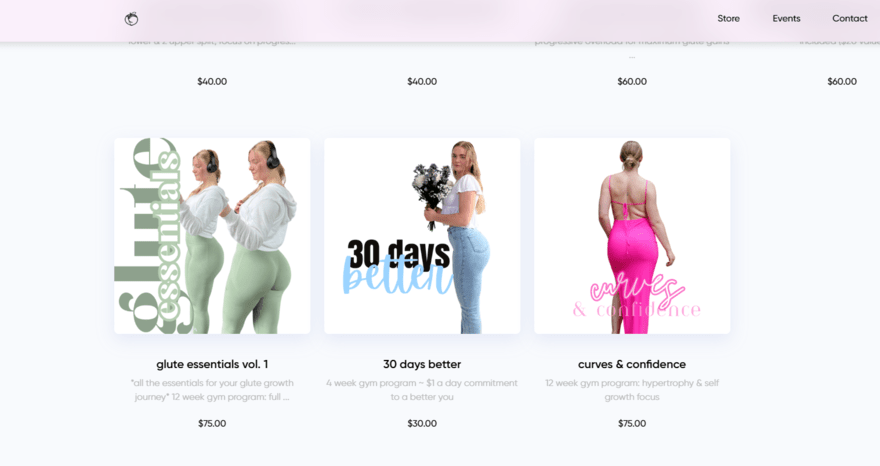
You don’t just have to sell physical items from your online store. Digital courses such as online courses, fitness programs, or photo filters are all examples of high-margin intangible products.
If you have a skill that people would be willing to pay for, providing a digital course can be a great way of making money. Customers can have access to the product in seconds; all they have to do is pay and download, meaning they’ll only continue to grow in popularity. Even better, the profit margin can be 100% if you create and design the course yourself.
How To Sell Digital Courses Online
When it comes to sourcing, it really depends on what you need. If you’re creating a course, you may need to find a writer and designer to put it together for you. Alternatively, you might be comfortable doing this yourself.
As for pricing, it’s worth looking at platforms like Udemy and Ted which are good reference points to get an idea of how much an online course or presentation should cost. You can also read our guide to how long it takes to develop an online course, to get an idea of how much time investment you’re looking at.
You’ll also want to market your offering, and social media platforms like YouTube are great for giving customers a taste of what they can expect.
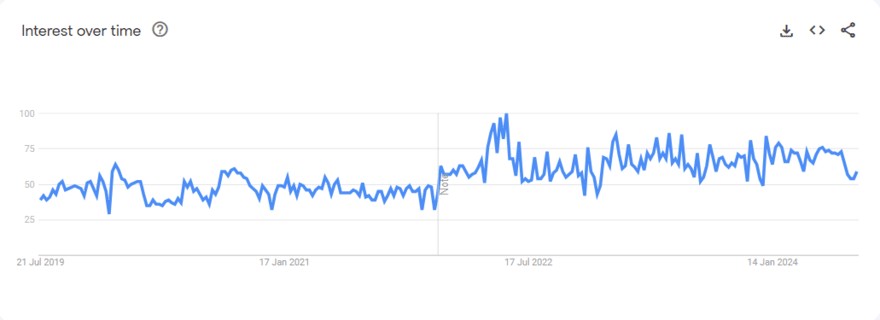
Pros of Selling Digital Courses
- There are no shipping or storage costs since it’s a digital product.
- There’s a strong market for educating people online – some 57 million people are expected to take an online course by 2027.
Cons of Selling Digital Courses
- Compared to buying and selling a physical product, this product is hugely time consuming to create.
- It’s difficult to build up authoritativeness and trust if you don’t have an online following prior to launching your product.
- PDF purchases are prone to fraud, as they can be distributed for free. Research added security measures or possibly look into alternatives like app subscriptions.
17. Smart Home Devices
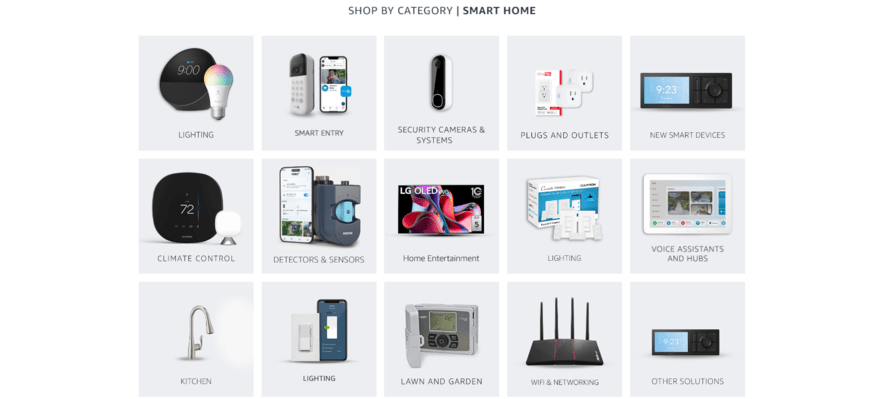
Everything is connected these days, and it’s usually done via a smart device. From speakers to TVs and thermostats, these products are high in popularity due to their convenience, energy efficiency, and security enhancements.
Ecommerce platforms selling smart devices can see profit margins of around 30%, which is highly appealing.
How To Sell Smart Home Devices Online
Source products from reliable suppliers, because the last thing you want is out-of-date tech or unreliable gadgets. Pricing should strike a balance between covering costs and staying competitive.
Consider engaging with influencers to do online reviews on platforms like YouTube, showcasing your tech in action. User reviews are also great for building trust once you’ve sold a few products.
Pros of Selling Smart Home Devices
- The target market is tech-savvy consumers who are often willing to pay a little more to have the luxury of saying they have the latest smart gadget.
Cons of Selling Smart Home Devices
- There’s a lot of competition as the market has grown at pace. Try to find your niche to gain a competitive edge, perhaps offering smart home installation.

18. Personalized Gifts
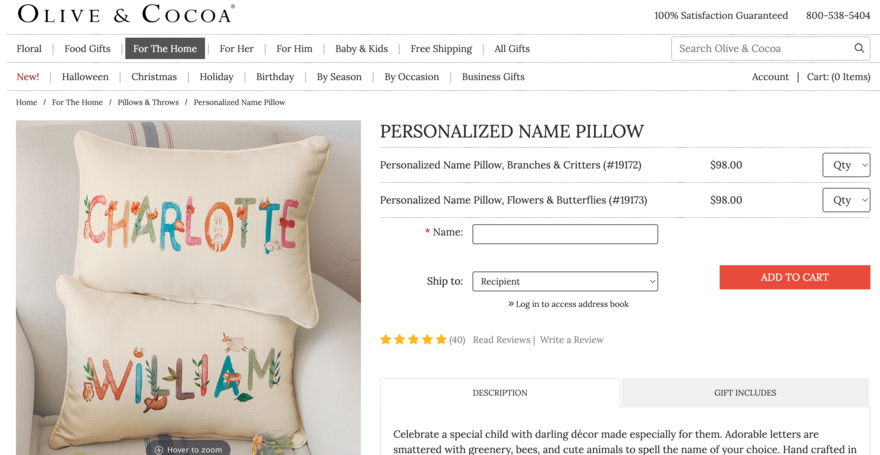
Selling personalized gifts online is a flourishing niche, driven by the desire for unique and meaningful gifts in a sea of generic options.
These items are popular because they convey thoughtfulness and emotional connection — they’re the perfect gift for various occasions, from Valentines to birthdays, or just because. Profit margins can be substantial, too, particularly for custom-made or handcrafted items. It’s not uncommon to get a markup of 20% to 40%.
How To Sell Personalized Gifts Online
Partner with skilled artisans or suppliers offering customization services, either by using social media to increase your network or using a search engine to find stockists that make these gifts.
Pricing should account for production costs, personalization expenses, and market rates. Meanwhile, effective marketing involves showcasing the emotional significance of personalized gifts, emphasizing their uniqueness and thoughtfulness.
Utilize social media, email marketing, and partnerships with event planners or wedding websites to expand your reach.
Pros of Selling Personalized Gifts
- They will be in demand steadily throughout the year for special occasions.
- The target market for personalized gifts is vast and you will have full control over the customers you attract based on the product you offer.
Cons of Selling Personalized Gifts
- If you are personalizing by hand – sewing, for example – you may not be able to keep up with demand if it increases. You’ll be able to speed up the process by using a sewing machine or hiring staff.
- The increased wait time for personalized products may lead to bad reviews and slow profits, so be transparent about these timings on your site to avoid disappointment.

Where to Find Inspiration for High-Margin Products
The trick to choosing the best high-margin products to sell online is to do your research. Customer demand and consumer trends are two of the most crucial factors to consider, so being able to find products that are in high demand is crucial. After all, why sell a product nobody actually wants to buy?
Below, I’ve listed some of the best places to find inspiration for high-margin ecommerce products.
Google Trends
Google Trends is a free tool that allows merchants to better understand what products their customers are interested in. The tool offers invaluable data and insights into the most popular products on the market.
Social Media
Social media is a great place to find inspiration for almost anything, including high-margin products. People love to share product information, hacks, and wish lists so be sure to monitor relevant hashtags and groups. Identify your target audience and follow influencers popular in that field to discover what products they’re talking about online.
Ecommerce Platforms
Major ecommerce platforms such as Amazon and eBay usually feature a “trending products” section featuring the current most popular items. Although this is used as a prompt to encourage visitors to buy more, you can use it for inspiration on what is currently popular online.
Competitors
Closely monitor your competition to see what products are selling well for them – do they have items that are regularly out of stock, creating a gap for you to fill?
Make sure that there isn’t already more than enough opportunity to buy your chosen product online. Too many merchants offering the same item will make it harder for you to price competitively, causing a hit to your profit margins.
How To Calculate Profit Margin
Once you have chosen your high profit margin products, it’s important to calculate your profit margin. This is completely unique to your business because it’s determined by your decisions, such as how many employees you have, how you purchase or manufacture your products, how you store them, and the price you sell them for.
Calculating profit margin is achieved through a simple formula:
(Net profit / revenue) X 100
This might seem intimidating for those of you who aren’t math geniuses, but it’s easy when you break down the steps:
- Net profit is calculated by subtracting all your business expenses from your total revenue
- Now take this number and divide it by your revenue
- Multiply this number by 100 to get a profit margin percentage
For example, if your hair salon made an annual revenue of $200,000 and you spent $150,000 annually on products, equipment, and staffing, your net profit would be $50,000. Then, all you would have to do is divide this number by your revenue ($200,000), which makes 0.25. After multiplying this by 100, you can work out that your salon’s profit margin is 25%.
If in doubt, there are tons of free online profit margin calculators available at the click of a button!
If your gains aren’t looking as impressive as you hoped, fear not! Consider ways to increase your profit margin, like raising your pricing, buying your products from a cheaper supplier, or working with a cheaper manufacturer.
Summary
Now you know some of the most profitable products to sell online, you’re ready to start selling! But be sure to think carefully about a few things before you commit to purchasing your products:
Make sure you’re selling products that are in high demand. Not all high-margin products will be popular, and if nobody wants it, it won’t sell! Knowing how to find trending products to sell online will help you feel confident in your choices.
Remember that there are lots of factors to consider when choosing your products, ranging from how much money and time you have on your hands, to your online presence and your access to storage. Choose products that will work best for your business at this point in time and increase your range as you go.
Lastly, when you find these products, accurately calculate your profit margin using the equation above to determine whether it aligns with your needs and expectations.
If you complete all the above steps, you should be confident that you’ll be reaping the rewards in no time!

4 comments